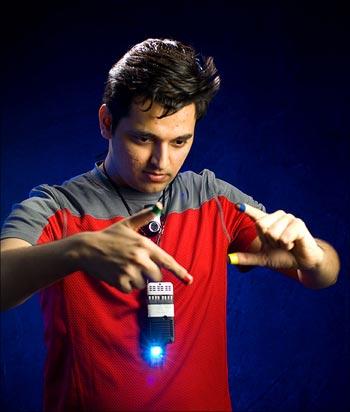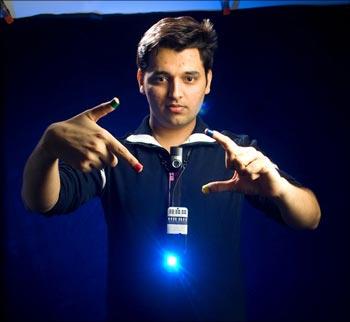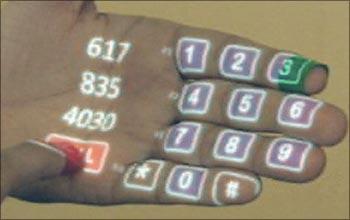 | « Back to article | Print this article |
MIT grad Mistry to make digital 'SixthSense' open source
If Pranav Mistry has his way, people around the world can build their own wearable 'SixthSense' -- which uses a camera that understands human gestures -- at a cost of less than Rs 15,000 ($300) by obtaining the software he developed for free in the next few months.
Mistry, a PhD student in Pattie Maes' Fluid Interfaces Group at MIT's Media Lab, is the genius behind SixthSense, a wearable device that enables new interactions between the real world and the world of data.
"I notice that it's hard to for these kind of things to market in some sense. . . because I don't want this to comply with some of kind of corporate policy," he told PTI in Mysore on Friday on the sidelines of TED conference being held in India for the first time.
"Rather than waiting for that time to come, I want people to make their own system. Why not?"
"People will be able to make their own hardware. I will give them instructions how to make it. And also provide them key software...give them basic key software layers. . . they will be able to build their own applications. They will be able to modify base level and do anything".
MIT grad Mistry to make digital 'SixthSense' open source
SixthSense is going to be open source very soon, said Mistry, who is passionate about integrating the digital informational experience with real world interactions.
TED (Technology, Entertainment, Design) is a small non-profit organisation devoted to ''ideas worth spreading.'' It started as a four-day conference in California 25 years ago.
Explaining the concept, Mistry said: "SixthSense is an inexpensive wearable gestural interface that augments the physical world around us with digital information and lets us use natural hand gestures to interact with that information.
"By using a camera and a tiny projector mounted in a pendant like wearable device, 'SixthSense' sees what you see and visually augments any surfaces or objects we are interacting with. It projects information onto surfaces, walls, and physical objects around us, and lets us interact with the projected information through natural hand gestures, arm movements, or our interaction with the object itself."
'SixthSense' attempts to free information from its confines by seamlessly integrating it with reality, and thus making the entire world your computer, he said.
MIT grad Mistry to make digital 'SixthSense' open source
"I am working on that to make it open source", he said, adding, it would take 2-3 months for that to happen as "I have to do a lot of things before making it open source."
On the estimated cost of the device, he said: "Cost will be mainly hardware because software. . . I am going to give it free. Hardware cost will be around $300 at minimum. This will go down for sure."
SixthSense, which redefines how we uses objects and gestures to interact with the digital world, was cobbled together with components that are off-the-shelf.
SixthSense was voted the Invention of the Year by Popular Science magazine in the United States, and Mistry won one of Technology Review's TR35 Young Inventor Awards in August this year.
Mistry developed the SixthSense device to satisfy his impulse to paint the physical world with digital information.
MIT grad Mistry to make digital 'SixthSense' open source
Using a camera that understands human gestures, the SixthSense has extraordinary capabilities, Mistry said.
The technology is integrating the digital and physical worlds, rather than forcing one to switch back and forth between the two.
SixthSense comprises a pocket projector, a mirror and a camera. The hardware components are coupled in a pendant like mobile wearable device. Both the projector and the camera are connected to the mobile computing device in the users pocket.
Giving examples about its use, he said SixthSense lets the user draw icons or symbols in the air using the movement of the index finger and recognises those symbols as interaction instructions.
Likewise drawing an @ symbol lets the user check his mail.
MIT grad Mistry to make digital 'SixthSense' open source
"The digital world has power because it has dynamic information, but it's important that we stay human, instead of being another machine sitting in front of a machine," said Mistry who, before his studies at MIT, worked with Microsoft as a UX researcher.
Some previous projects from Mistry's work at MIT include intelligent sticky notes, Quickies, that can be searched and can send reminders; a pen that draws in 3D; andTaPuMa, a tangible public map that can act as Google of physical world.
His research interests also include Gestural and Tangible Interaction, Ubiquitous Computing, AI, Machine Vision, Collective Intelligence and Robotics.




